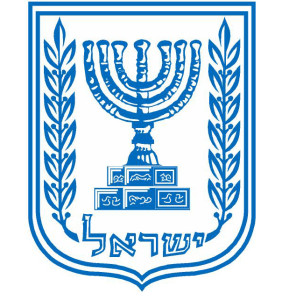In years when the first night of Chanukah comes out on Friday night, there are two Shabbatot of Chanukah. The Gemara tells us which Haftarah to read in that case:
ואי מיקלעי שתי שבתות, קמייתא בנרות דזכריה, בתרייתא בנרות שלמה) מלכים א’ ז'(
If there are two Shabbatot; on the first we read the Candles of Zechariah; on the second, the Candles of Shlomo. (Talmud Megilla 31a)
The “Candles of Shlomo” refers to the description of the vessels that Shlomo had made for the Beit HaMikdash. The Haftarah includes the following verse:
וְאֶת הַמְּנֹרוֹת חָמֵשׁ מִיָּמִין וְחָמֵשׁ מִשְּׂמֹאול לִפְנֵי הַדְּבִיר זָהָב סָגוּר
The Menorahs, five on the right, and five on the left, before the Sanctuary, of pure gold (Melachim I 7:49)
The Midrash explain the symbolism of these Menorahs:
וכל מנורה היו בה שבעה נרות הרי שבעים כנגד שבעים אומות
Each Menorah had seven candles; seventy represents the seventy nations
(Yalkut Shimoni Melachim I 185)
Ten Menorahs with seven candles each add up to seventy candles. The number seventy, which is an iconic number in the Torah, refers to the Nations of the World.
The reference to the Seventy Nations appears also in the context of Chanukah. There is a famous dispute between Beit Hillel and Beit Shammai whether we should light one candle on the first day, two on the second, and so on until there are eight candles on the eighth day, or whether, according to Beit Shammai, we should light eight on the first day, seven on the second, and so on, until we light one candle on the eighth day. The reason for Beit Shammai’s suggestion is stated in the Talmud:
טעמא דבית שמאי – כנגד פרי החג
The reason of Beit Shamai: representing the bull sacrifices brought on Chag (Succot). (Talmud Bavli, Shabbat 21b)
According to Beit Shammai, Chanukah candles refer to Succot sacrifices. The Torah commands that on the first day of Succot, we bring thirteen bulls, twelve on the second, eleven on the third, and so on, until there are seven on the seventh day, for a sum total of seventy bulls. On the eighth day, Shmini Atzeret, we bring a single bull.
The Talmud explains the symbolism of these numbers:
אמר רבי (אליעזר) הני שבעים פרים כנגד מי כנגד שבעים אומות. פר יחידי למה כנגד אומה יחידה. משל למלך בשר ודם שאמר לעבדיו: עשו לי סעודה גדולה. ליום אחרון אמר לאוהבו: עשה לי סעודה קטנה, כדי שאהנה ממך. אמר רבי יוחנן: אוי להם לגויים שאבדו ואין יודעין מה שאבדו, בזמן שבית המקדש קיים מזבח מכפר עליהן, ועכשיו מי מכפר עליהן?
R’ Eliezar said: Seventy bulls are analogous to what? To the Seventy Nations. The one bull is analogous to what? To the Unique Nation. Like the king that says to his servants, “Make me a big feast.” On the last day, he says to his beloved friend, “Make me a small meal, that I will enjoy your company.” R’ Yochanan said: Woe to the nations that destroyed, and do not realize what they destroyed. In the time of the Temple, the Altar would atone for them, but now who atones for them? (Talmud Succah 55b)
Part of the purpose of our service of G-d is universal. The rainfall of the entire world is determined on Succot; therefore, the sacrifices that we bring are not only for ourselves, but for all seventy nations. Ironically, as R’ Yochanan points out, the Nations of the World did not appreciate what we did for them, and destroyed the Beit HaMikdash, even though it was a source of blessing also for them.
By suggesting that we light Chanukah candles in the manner of Succot sacrifices, Beit Shammai highlights the tension in our relationship with the Nations of the World. On the one hand, we act to further the welfare of the entire world, be it through service of G-d at the Altar, or through the light of Torah wisdom that we project to the world. On the other hand, our expectations of being appreciated for our efforts are minimal. Just as they destroyed the Beit HaMikdash, a source of blessing to themselves, they have not hesitated to destroy Batei Midrash, and, as in the time of the Maccabees, to ban the study of Torah.
While the first seven days of Succot are outward-facing, Shmini Atzeret, the eighth day of the Succot holiday, is a day set aside only for the Jewish People. We bring a single bull, representing the singularity that is the Jewish Nation. We are unique, and our relationship with G-d is unique.
When Chanukah has two Shabbatot, the second Shabbat is the eighth day of Chanukah. We read the Haftarah of Shlomo’s seventy candles, symbolizing the universal aspect of Chanukah, of the light that the Jewish People give the world. The seventy candles allude to Beit Shammai, according to whom we would light a single candle on the eighth day. That single candle, like the single bull offering of Shmini Atzeret, remind us that ultimately, the Jewish People stand alone.
Copyright © Kira Sirote
In memory of my father, Peter Rozenberg, z”l
לעילוי נשמת אבי מורי פנחס בן נתן נטע ז”ל

